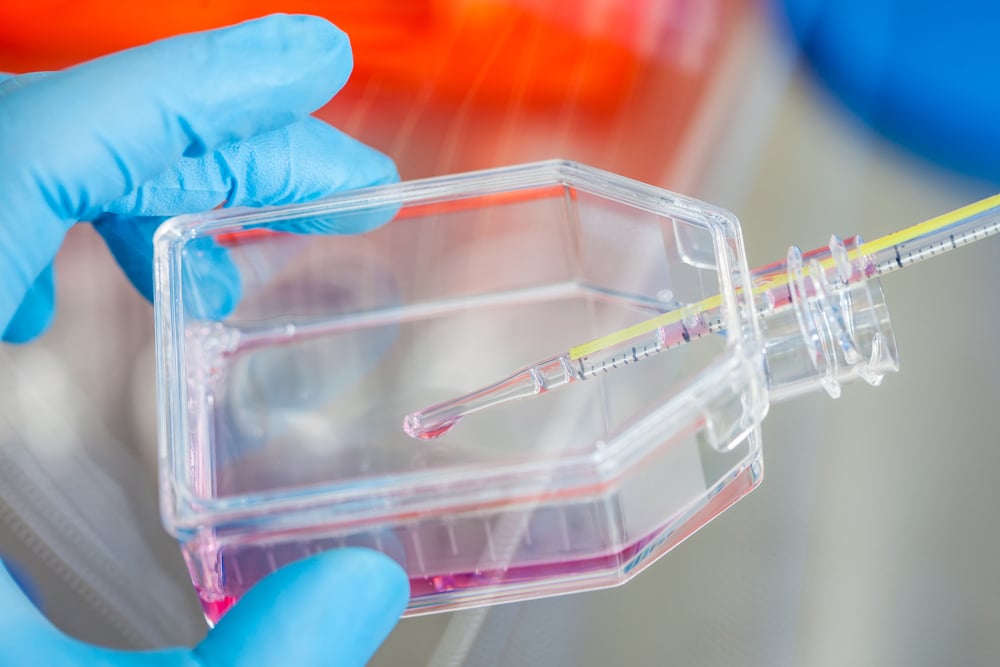Pompe disease is a rare lysosomal storage disease, with cases estimated at only one in every 40,000 births. While an enzyme replacement treatment for Pompe disease is available, it is time-consuming and incredibly costly to today’s patients. Left untreated, this condition can lead to early death, which is why alternative treatments are so urgent. Now, patients have hope: Science Daily reports that researchers from the University of Maryland used cell culture models to develop a method that could make enzyme replacement therapy more efficient and less expensive. The researchers published the study on their new method in the journal Chemical Science.

What Is Pompe Disease?
Pompe disease is, at its core, an enzyme disease. Patients with Pompe disease lack a critical cellular enzyme that serves to turn glycogen into glucose. This enzyme is known as acid alpha-glucosidase. Without it, patients are unable to break down glycogen, a form of sugar that the body stores to convert to energy. Left intact, that glycogen builds up in the cells and damages key muscle tissue, especially tissue in the heart. Pompe disease is an inherited condition, caused by mutations in the GAA gene that reduce or eliminate the enzyme alpha-glucosidase that would otherwise break down glycogen.
The Need for Pompe Disease Treatments
Currently, Pompe disease patients only have access to one treatment. The treatment replaces the missing acid alpha-glucosidase enzyme via direct intravenous injection into the blood, with the hope that the enzyme will enter the cells and break down the excess glycogen. Unfortunately, as Science Daily reports, only a small amount of that enzyme actually reaches the cellular machinery. As a result, many Pompe disease patients rely on constant enzyme replacement injections, sometimes every few days, for life. UMD Chemistry and Biochemistry Professor Lai-Xi Wang, the corresponding author of the study, explains further. “As a result of this inefficiency, a large quantity of the enzyme needs to be injected, and the cost can go up to a half-million dollars per patient a year,” Wang told Science Daily. Fortunately, Wang’s team was able to use cell culture models to dramatically improve enzyme therapy.
Using Cell Culture Models in Enzyme Therapy
To develop a superior enzyme therapy method, Wang and his team had to start with a ligand, or binding molecule. This molecule would, in theory, help the alpha-glucosidase enzyme travel more efficiently through a patient’s bloodstream. After studying various molecules, the team identified a ligand that was, as Science Daily puts it, “easily recognized by a specific receptor in the cellular transport system.” The ligand was found to carry compounds from the bloodstream across the cell membrane in the cell culture models – arriving directly at the area where glycogen should be broken down into glucose. Easier receptor binding meant enhanced glycogen degrading activity – implying that Pompe disease patients could receive less-frequent enzyme injections. To find out if the treatment was effective, Wang’s team attached the newly discovered ligand directly to the alpha-glucosidase enzyme. Amazingly, the researchers found that the ligand was much more efficient at delivering the enzyme to the target area than the current therapy for Pompe disease.
Research Implications
The researchers’ findings have far-reaching implications. First, the findings could reduce the number of injections required to treat this rare disease. “Our method could dramatically reduce the amount of enzyme and maybe also the frequency of injections needed to treat Pompe disease, because it ensures that more of the alpha-glucosidase enzyme gets into the cells’ machinery where it can do its job,” said Xiao Zhang, the lead author of the study. The method could also prove promising for patients with other lysosomal storage diseases.
_____
While the University of Maryland research team is still seeking approval to proceed from cell culture to animal models, this research could prove immensely promising.
Scantox is a part of Scantox, a GLP/GCP-compliant contract research organization (CRO) delivering the highest grade of Discovery, Regulatory Toxicology and CMC/Analytical services since 1977. Scantox focuses on preclinical studies related to central nervous system (CNS) diseases, rare diseases, and mental disorders. With highly predictive disease models available on site and unparalleled preclinical experience, Scantox can handle most CNS drug development needs for biopharmaceutical companies of all sizes. For more information about Scantox, visit www.scantox.com.
